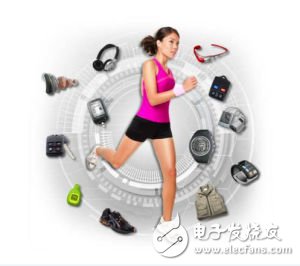On this year's Black Friday, in addition to the large discounts on TV and low-end notebooks in previous years, new products appeared in products with a 50% discount and lower discounts this year: wearable devices.

Wearables company Jawbone launched a 40% discount on the activity tracker Up3, which was launched earlier this year; the Pebble smart watch, which can be checked for mobile phone calls, is half-folded for £50; Garmin’s fitness-based function GPS smart watches are priced at £100.
This is not the best sign for wearable technology. As smartphone sales have reached equilibrium, sales of tablets, TVs and PCs have fallen, and manufacturers have invested in wearables, hoping to ignite a fire in new product areas. The current result is that there are excess connected watches and wearable devices for all brands on the market. Samsung released seven smart watches in two years; Apple launched its own equipment earlier this year; even traditional watchmakers joined the game: Fossil bought wearables for $260 million this month Merchant Misfit.
These manufacturers all want the use of wearable devices to be as common as smartphones. Through a full range of activities, including steps, calories, sleep patterns, etc., make our lives healthier and more efficient. Smart watches can free us from smartphones and can be used to view emails, text messages and maps.
Technology enthusiasts and fitness enthusiasts have fueled market expectations for wearable devices. Market research firm IDC believes that global sales of wearables will increase by 163% this year, from 28.9 million units in 2014 to 76.1 million units. But this data is relatively small, and it is unclear whether wearables will go beyond niche products. Dr. Paul Lee of Diller said that by studying the consumer behavior of wearable technology, most people buy wearables to show people how healthy they are; as a tool to motivate them to become healthy; for some people Implying that it is considering becoming healthier. For the latter two cases, the activity tracker is equal to the gym member: people are willing to buy when they buy, but the number of uses will decrease after a period of time, especially if the result does not match the expected value. Although the concept of “quantifying self†is very popular in Silicon Valley, it does not necessarily translate into mainstream, especially considering that all its effects require self-discipline.
Although the sales activities of trackers are improving, their prospects may not be so optimistic. Studies have shown that Fitbit, the world's best-selling wearable device manufacturer, has fallen in share since the summer, even before it announced plans to raise cash earlier this month. Jawbone is going through the second round of layoffs this year. Gartner Consulting said that wearables have just experienced "expansion peaks" and are beginning to experience "disillusionment."
A smart watch is of course a different sale. An Apple Watch can accept information, control music, make wireless payments, and more. The product is also updated: Pebble was released in 2013, and Apple's first watch was sold for 7 months. Still, early signs are not very optimistic. Apple's sales easily surpassed smart watch competitors, but Google search data showed more interest in the iPod, a product that sold for 14 years. At the beginning of this month, TAG Heuer announced that its first smart watch could be exchanged for mechanical watches after two years. It seems that there is little confidence in smart watches.
The situation may change, but for now, most smartwatch apps are just mimics of smartphones, and it's unclear whether the two are critically different, except one installed on the wrist, one in the pocket or at the desk. This is enough to count as a selling point. Checking text and email through the screen on your wrist doesn't seem to be much more convenient than a smartphone, and it's not very cautious, because few people watch the watch frequently during a meeting, which can be impatient.
Despite the significant increase in sales, the penetration rate is still very low. According to Deloitte's statistics, as of June this year, the holding rate of fitness bracelets was 4%, and that of smart watches was 2%. Activity trackers and smart watches are getting better and better, and now smart wear is just a new thing for most people.
This Automation curtain is specially designed for automation industry. SDKELI LSC2 light curtain is designed for automation field, with small size, compact structure and strong anti-interference ability, and the product meets IEC 61496-2 standards. The Automatic Light Curtain is with reliable quality and very competitive price. It has been used in many factories and has replaced curtains from Sick, Omron, Banner, Keyence, etc.
Automatic Light Curtain,Laser Light Curtain,Automation Light Beam Sensor,Automatic Infrared Beam Sensor,Infrared Beam Curttain Sensor,Infrared Beam Sensor
Jining KeLi Photoelectronic Industrial Co.,Ltd , https://www.sdkelien.com